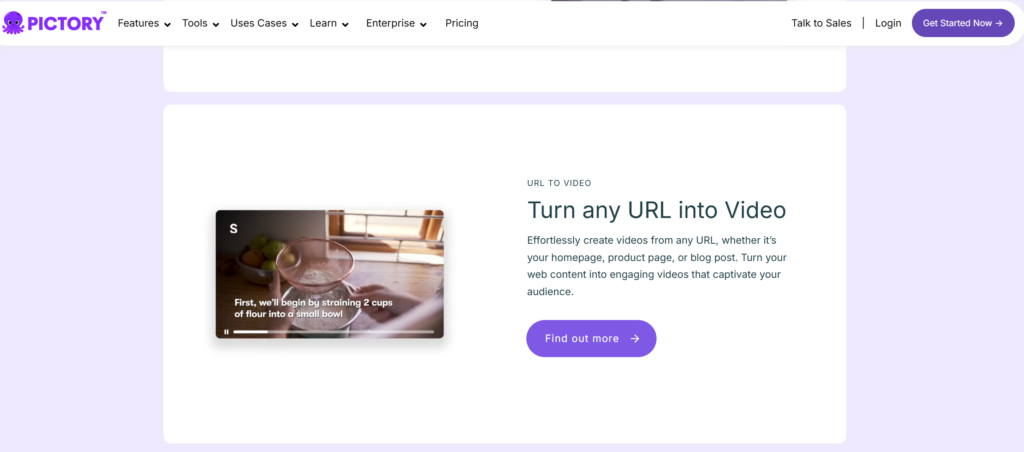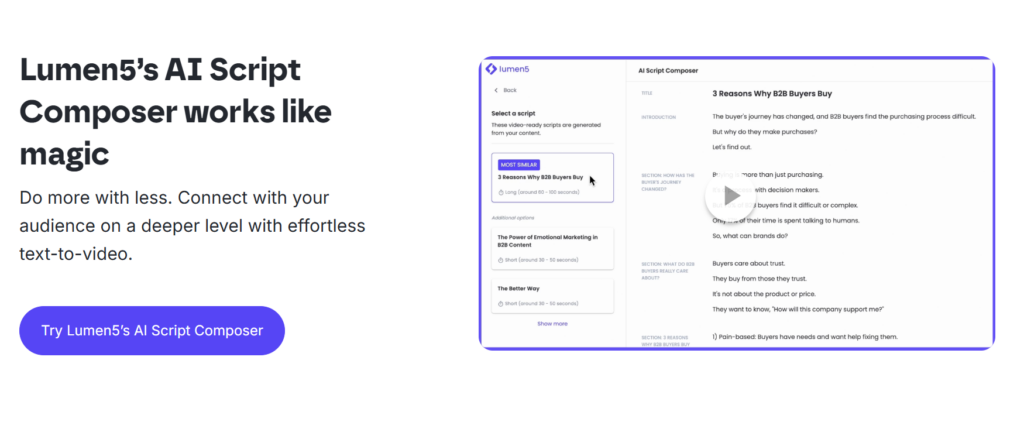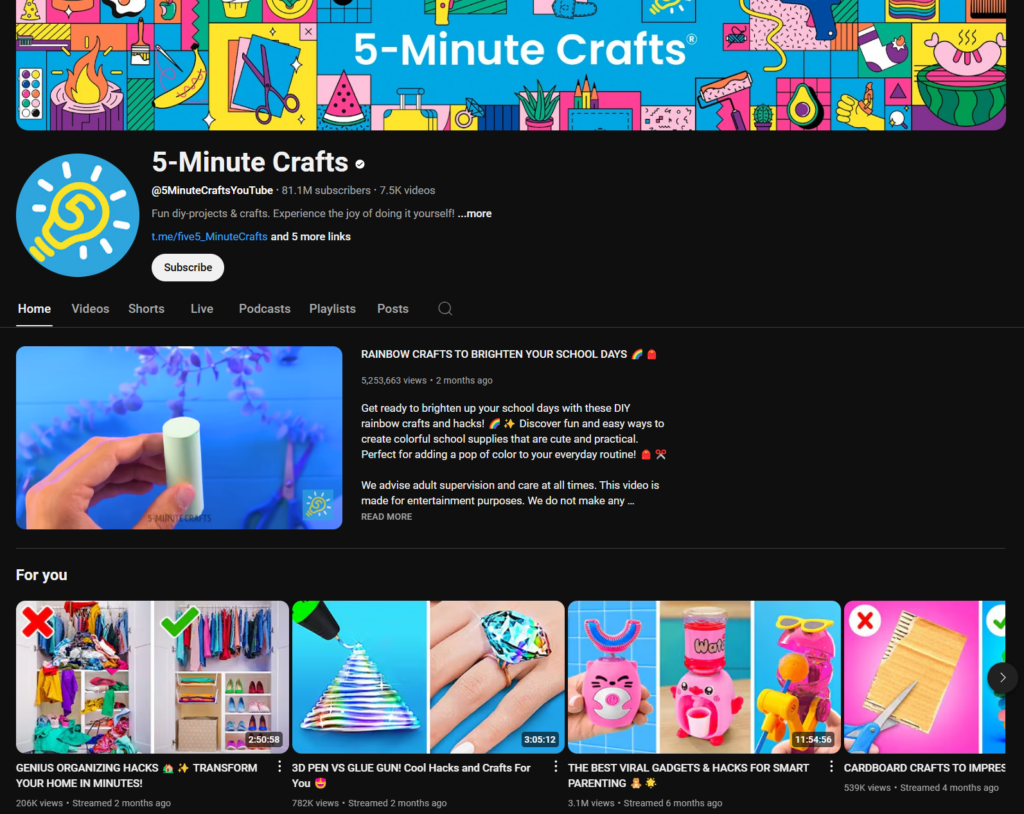Video content has become the gold standard for capturing and retaining audience attention. For content creators and marketers, producing high-quality videos from scratch can be time-consuming and expensive. Enter blog-to-video AI, a game-changing technology that turns written content into engaging videos in minutes.

This post explores the benefits of blog-to-video AI, how it works, and practical tips for using this innovation to expand your content strategy. Whether you’re a seasoned marketer or just starting your content creation journey, you’ll discover how blog-to-video AI can save you time, cut costs, and expand your audience.
Why Blog-to-Video AI is a Game Changer
Increased Engagement
It’s no secret that video content captures attention better than text. Studies show that viewers retain 95% of a message in video form, compared to only 10% when reading it in text. By converting your blogs into videos, you make your content more dynamic, visual, and memorable to your audience. Plus, videos are highly shareable, making it easier for your message to reach new audiences.
Time and Cost Efficiency
Traditional video production often involves hiring a scriptwriter, a video editor, and sometimes even a professional voiceover artist. Blog-to-video AI simplifies this process by automating tasks like script generation, visual selection, and voiceover creation. The result? You can create professional videos in a fraction of the time and cost it would take using traditional methods.
Wider Reach
Video-friendly platforms like YouTube, Instagram Reels, and TikTok cater to billions of active users every month. Transforming blogs into videos allows you to tap into these platforms to attract a broader range of audiences. Plus, search engines favor video content, meaning your videos could boost your SEO and drive higher website traffic.
How Blog to Video AI Works
1. Text Analysis
The first step involves AI analyzing your blog’s text content. It identifies the key points, important data, and critical messages to be included in the video. It simplifies the process of condensing blogs into concise, digestible scripts.
2. Visual Selection
Based on your blog’s topic and tone, the AI selects relevant visuals, such as videos, stock images, animations, or custom graphics. This ensures that the visuals align well with your message and boost viewer engagement.

3. Voiceover and Narration
Using natural language processing (NLP) and text-to-speech technologies, the AI generates human-like voiceovers for your video. Many tools even allow customization, offering different accents, tones, and pitches to suit your video’s branding.
4. Video Editing and Production
Once the script, visuals, and narration are ready, the AI puts everything together. It seamlessly edits transitions, overlays captions, and adjusts timing to create an appealing, polished final product.
Best Blog-to-Video AI Tools You Should Try
While there are plenty of tools on the market, here are some standout options that simplify the blog-to-video conversion process:
- Syllaby
Known for its beginner-friendly interface, Syllaby excels at automating text analysis and video creation. It’s a fantastic choice for creators who want to repurpose blogs without technical barriers.

- Pictory
Pictory is great for turning long-form blog articles into short, impactful videos. It offers an impressive library of visuals and customizations.

- Descript
Descript combines transcription, video editing, and AI narration into one tool. It’s particularly useful for fine-tuning your video’s voiceover and visuals.

- Lumen5
This tool shines in generating videos perfect for social media. Lumen5 emphasizes ease of use and offers branding features to help your videos stand out.

Best Practices for Using Blog-to-Video AI
Write Optimized Blog Content
Create blog posts with clear sections and subheadings, as these make it easier for the AI to identify key points. Additionally, concise sentences and relevant keywords ensure a smooth blog-to-video conversion.
Choose Engaging Visuals
Spend time selecting visuals that resonate emotionally with your audience. While AI can provide options, ensuring photos or video clips reflect your brand’s style and message can elevate the video.
Refine the Voiceover
Customize AI-generated voiceovers to better suit your brand. If the generic voice sounds robotic, tweak settings or replace it with a human voiceover for an authentic touch.
Test and Iterate
With each video you create, monitor audience engagement on platforms like YouTube or Instagram. Analyzing which videos perform best can guide future blog-to-video strategies.
Real-World Examples of Blog-to-Video Success
- A fitness blog transformed an article on “5 Benefits of Morning Workouts” into a 2-minute animated video. The video gained 100k views on YouTube, tripling their monthly website traffic.
- A tech company repurposed an in-depth blog post about cybersecurity tips into bite-sized Instagram Reels. The Reels improved their social reach, gaining thousands of new followers within two weeks.
- A small e-commerce store turned a blog titled “How to Choose the Perfect Coffee Machine” into a visually-guided explainer video. The video boosted product sales by 25% within a month.
Here are some popular faceless video creators and channels:
- Fitness Content: Fitness Blender – Known for faceless, narrated workout videos that cater to a wide audience.
- Tech Content: Techquickie – Offers quick, engaging tech explainers without on-camera presence.
- Cybersecurity Tips: The Hated One – Delivers privacy and cybersecurity advice with voiceovers and visuals.
- Product Explainers: Epicurious – Shares faceless recipe tutorials with crisp editing and narration.
- DIY Content: 5-Minute Crafts – Specializes in step-by-step faceless crafting tutorials.
- Educational Animations: TED-Ed – Provides animated videos on various educational topics.
- Book Summaries: Better Than Yesterday – Creates faceless videos summarizing books and self-help content.
- Cooking Tips: Tasty – Offers hands-only recipe demonstrations with upbeat music and subtitles.
- Investment Advice: WhiteBoard Finance – Explains financial topics with whiteboard animations and voiceovers.
- Travel Guides: Touropia – Narrates travel content with scenic stock footage.

Looking Ahead with Blog-to-Video AI
The future of content creation undeniably points toward automation and video-first strategies. Blog-to-video AI empowers businesses and creators to stay competitive in this evolving landscape by offering efficient, cost-effective, and impactful tools for content repurposing.
Whether you’re creating engaging social media clips, informational explainer videos, or promotional content, blog-to-video AI brings your vision to life with minimal effort.
Start leveraging blog-to-video AI tools like Syllaby today to save time, boost engagement, and broaden your content’s reach. The possibilities are endless, and the time to innovate is now.



